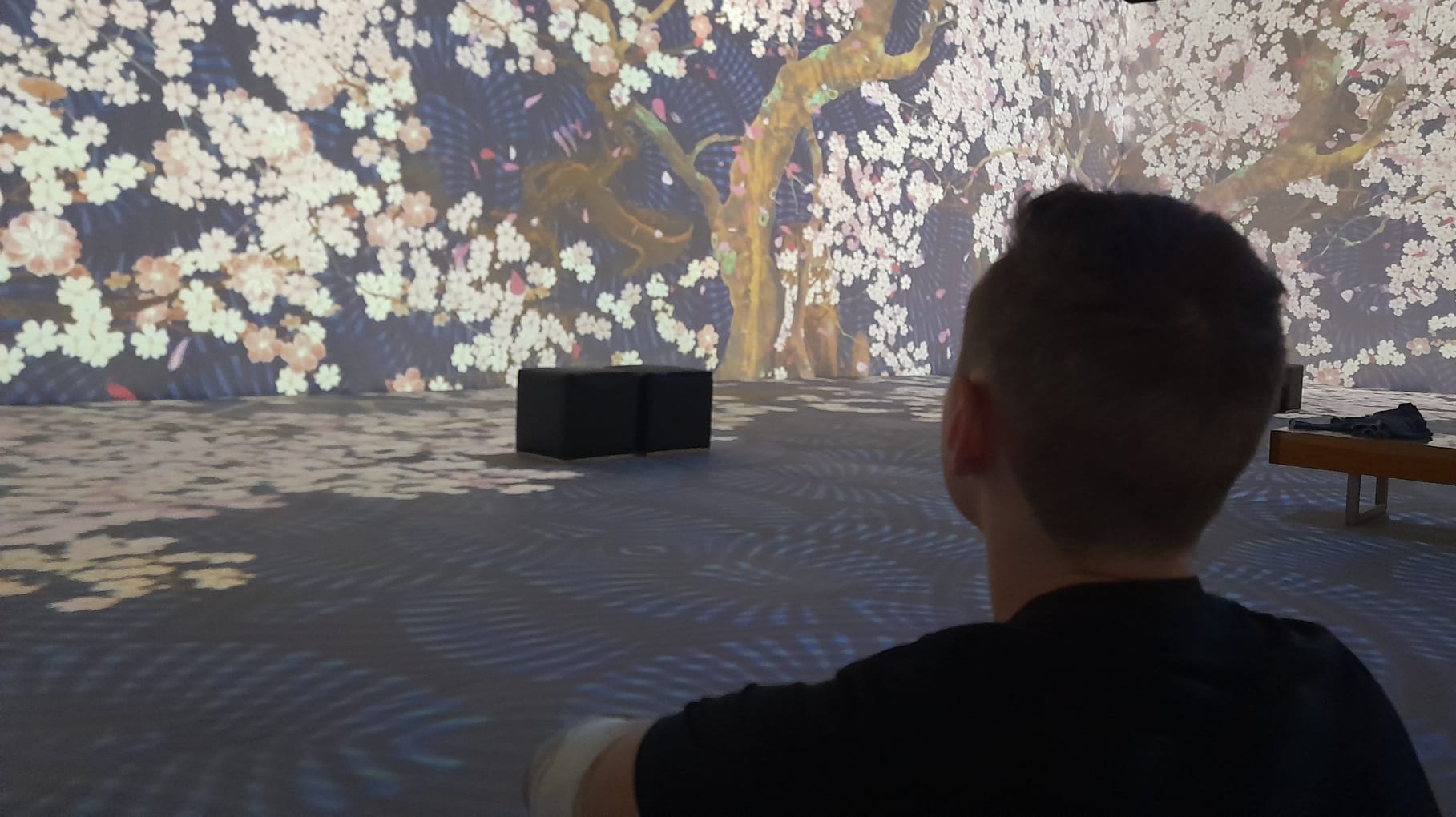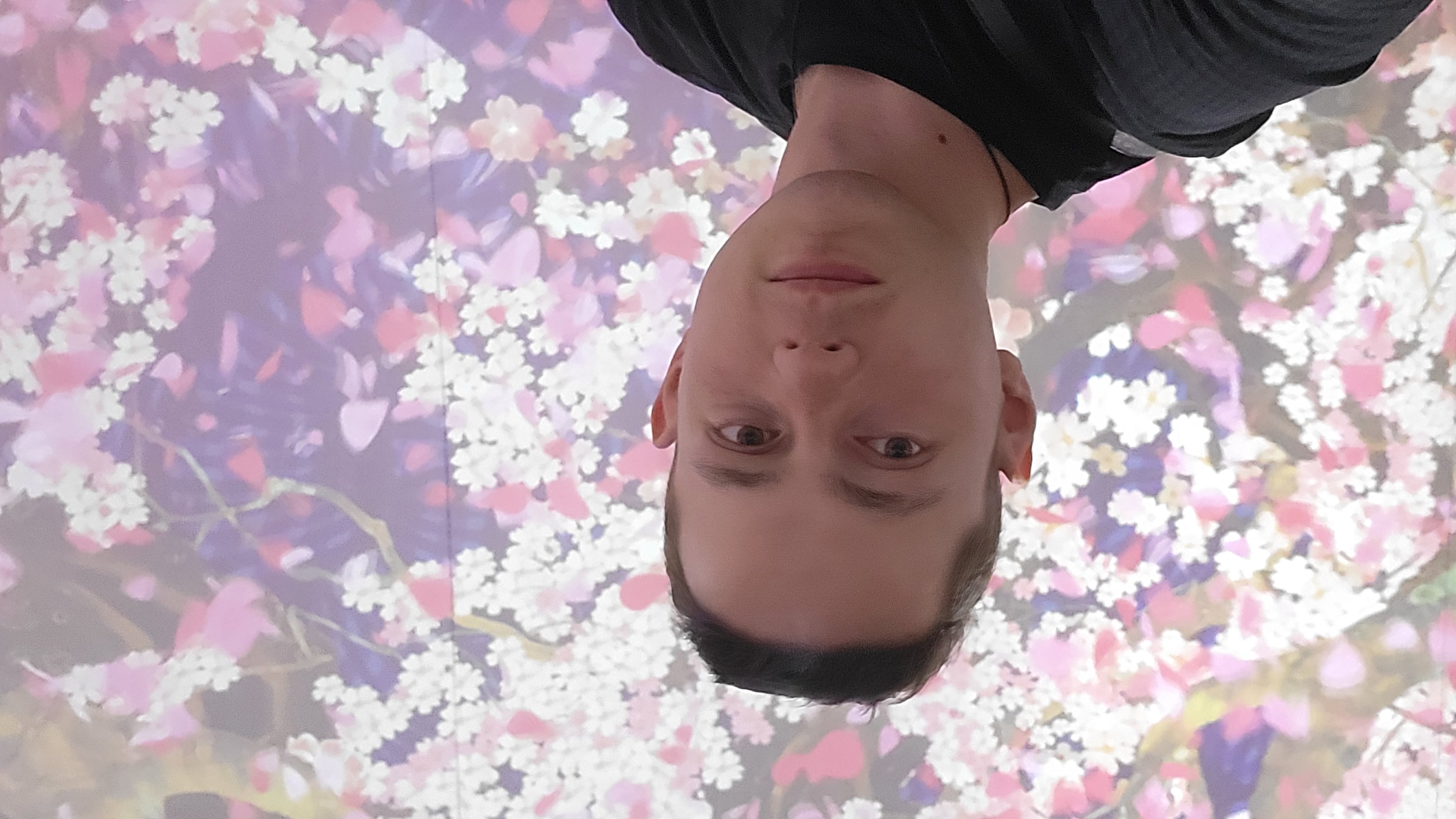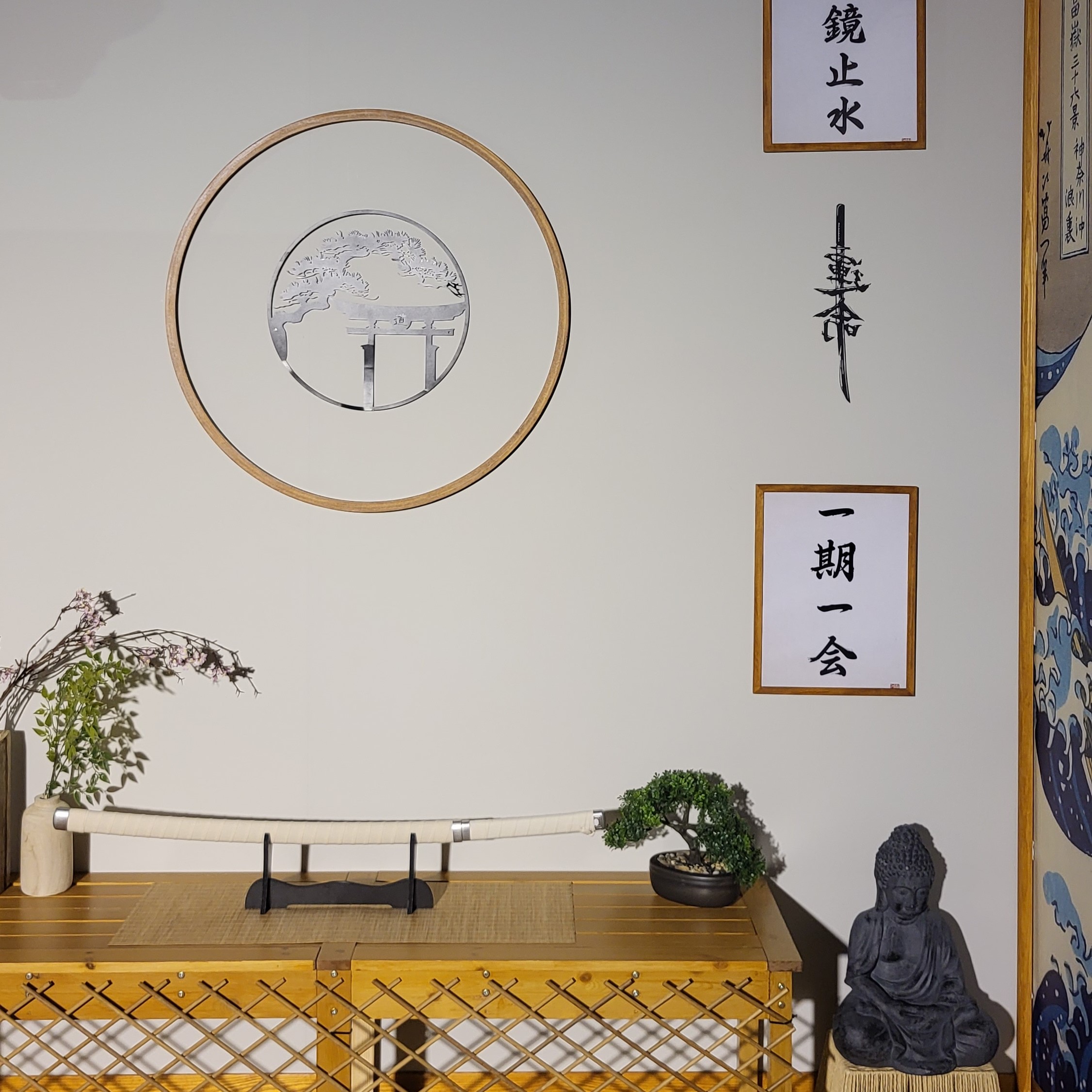Ukiyo-e 浮世絵: the art of Pictures of the Floating World
An introduction to the Japanese art genre Ukiyo-e, the popular exhibition Spirit of Japan, and other artworks, like The Great Wave off Kanagawa.
“Pictures of the Floating World”. If you hear that, what comes to your mind? A world where cats and people lightly bounce from one place to another (which, I agree, would be fun)? A world surrounded by fluffly clouds? To Japanese people during the Edo period (1600 AD ~ 1870 AD), this “floating world” was a way to capture their daily life and tints of their ways of entertainment, relaxation, work, festivals, and celebrities. Nowadays, to people around the world, both Japanese and non-Japanese, its art pieces still mirror with grace the society around that time.
Please allow me to tell you about Ukiyo-e, the exhibition “Spirit of Japan”, and some of my favourite Ukiyo-e pieces.
What is Ukiyo-e?
As you have just read, Ukiyo-e translates to “Pictures of the Floating World”, and it includes pieces from the Edo period in which the daily life of farmers, merchants, or fishermen is reflected, whether that is through the views they bathed in every day, their ways of entertainment, or their ways to make a living; kabuki actors, folk tales, and lifestyle at the pleasure districts would be shown too. For instance, have you ever seen this famous piece?
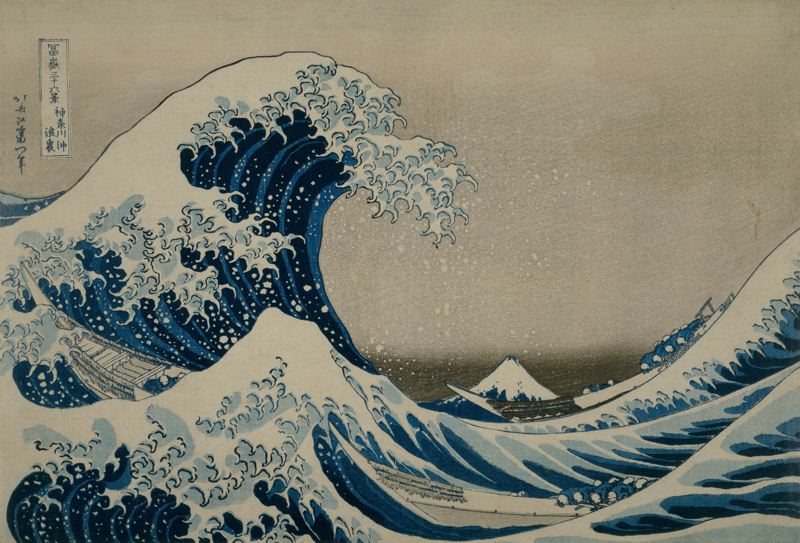 “The Great Wave off Kanagawa", by Katsushika Hokusai. Courtesy of: ukiyo-e.org1. Click image for more info.
“The Great Wave off Kanagawa", by Katsushika Hokusai. Courtesy of: ukiyo-e.org1. Click image for more info.
This is the first piece from the series of prints “Thirty six Views of Mount Fuji” by Hokusai, a prolific artist from this period. Known as “The Great Wave by Hokusai” or “The Great Wave off Kanagawa”, it is the favourite Japanese piece of many people and such is its popularity that it could even be recognized by those unfamiliar with Japanese art. The wave is the clear protagonist in this piece, with Mount Fuji in the background; however, had you ever stopped to notice that the people on the boat are fishermen? Here is where part of that “floating world” manifests.
Let’s check another example:
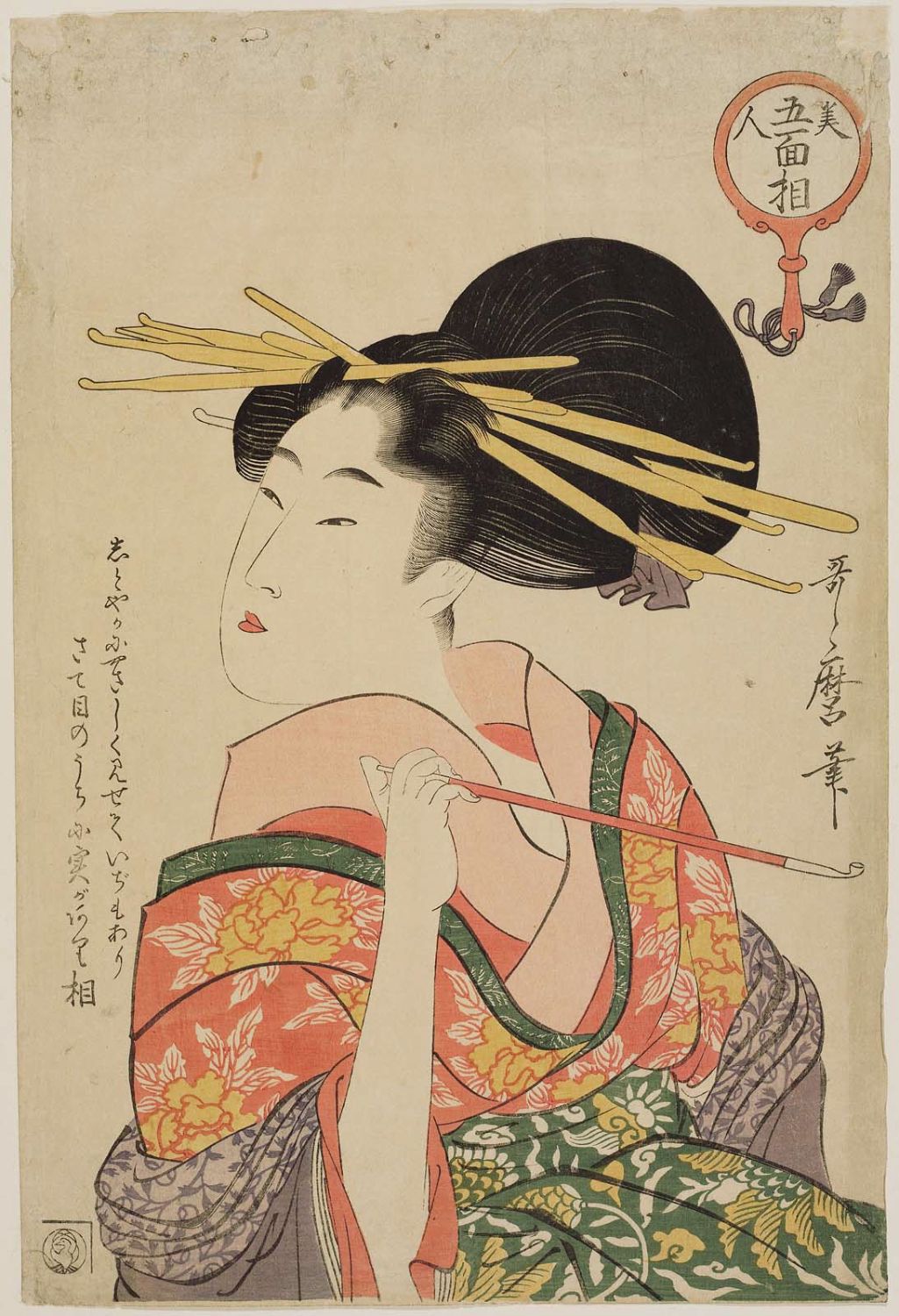 "Woman Holding a Pipe", by Kitagawa Utamuro. Courtesy of: ukiyo-e.org. Click image for more info.
"Woman Holding a Pipe", by Kitagawa Utamuro. Courtesy of: ukiyo-e.org. Click image for more info.
This print, “Woman Holding a Pipe”, by Utamaro, shows exactly what it says: a lady holding a smoking pipe. Dressed in flowery attire, the courtesan stares to the side while a prominent hairstyle held with 簪 kanzashi (hair ornaments) draws our attention.
From my point of view, due to the choice of colors, the style of the drawings, and what they show, I can comprehend why they show a “floating world”; at least to me, each piece is covered under a veil of worldly daydream.
How is Ukiyo-e… done? Paint? Wood? Canvas?
You may have noticed how I say “print” to refer to the pieces. This is because ukiyo-e resorts to woodblock carving and printing! If you are a bit familiar with Chinese or Japanese crafts, maybe you have heard about it before. Basically, the procedure is as follows2:
- Draw a design.
- Transfer the design into a flat wooden block (of, for instance, cherry wood); oil may be used to ease the transfer.
- Engrave the design in the wood with the use of chisels.
- Remove any paper residue and apply ink on top of the uncarved edges (the “lines” in your drawing).
- Print on a piece of paper.
- Color in, and make new woodblocks that would match specific colors for the painted drawing.
- Assemble color-specific woodblocks and print in series, ending with fully-colored prints.
This technique (color woodcutting) allowed for the artworks to be sold in greater quantities than what manual paintings would entail, thus easing the spread of this artstyle. In the following picture of a panel from the exhibition I will talk about in the next section, you can see a ukiyo-e print that illustrates the engraving woodcutting process itself:
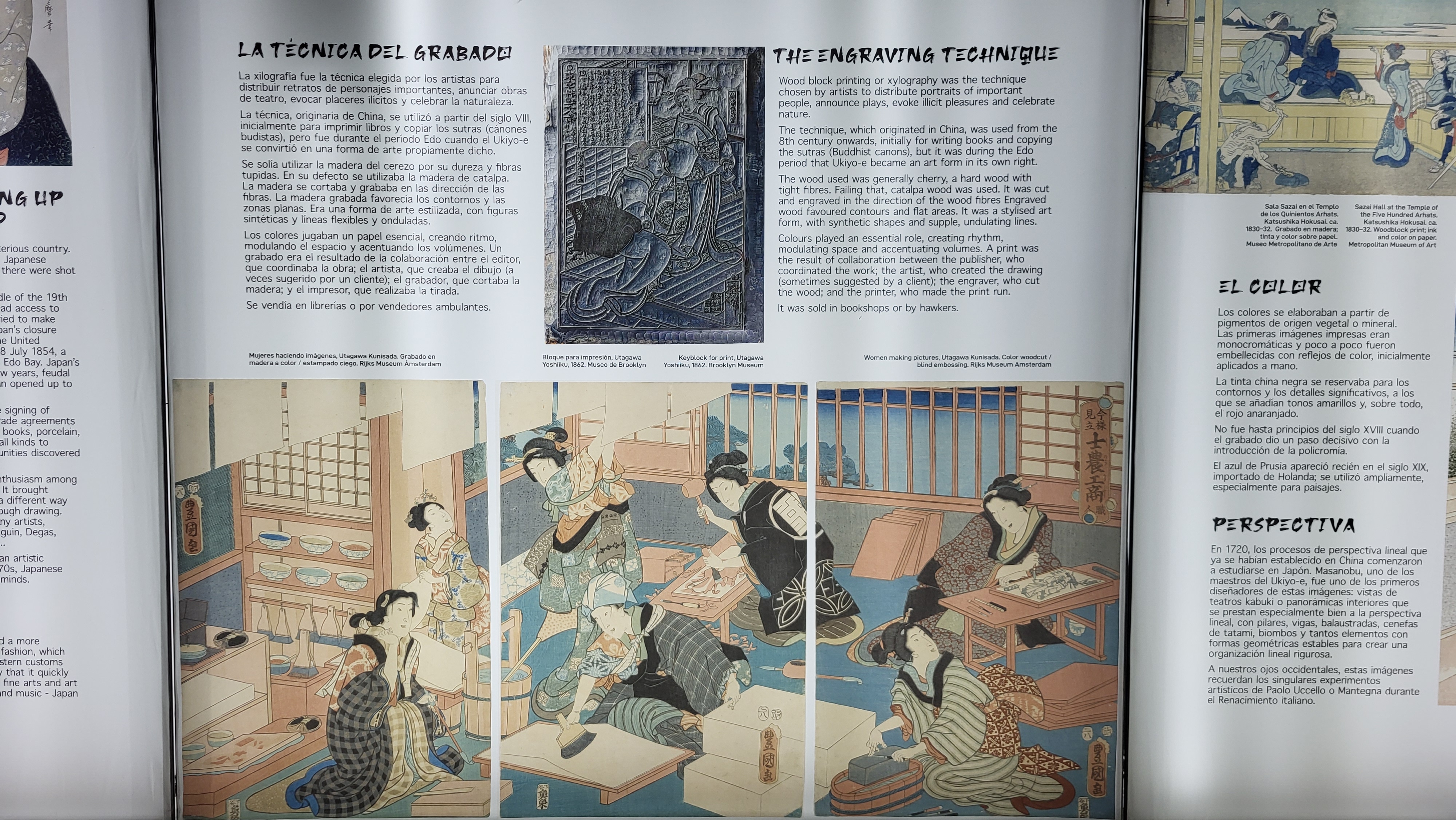 Panel from the exhibition "Spirit of Japan" explaining the engraving process. From left to right: colorful powders and various brushes, a lady smiling at the process and holding a pipe, a lady getting pieces of paper for the prints, a lady hanging to dry pieces of paper, a lady applying oil on top of the pieces, a lady smoothing a wood block, a lady sharpening a knife and other utensils, and a lady engraving a wood block
Panel from the exhibition "Spirit of Japan" explaining the engraving process. From left to right: colorful powders and various brushes, a lady smiling at the process and holding a pipe, a lady getting pieces of paper for the prints, a lady hanging to dry pieces of paper, a lady applying oil on top of the pieces, a lady smoothing a wood block, a lady sharpening a knife and other utensils, and a lady engraving a wood block
The Exhibition: “Spirit of Japan”
Recently in Spain there has been an art exhibition called “Spirit of Japan”, an immersive experience to learn about Ukiyo-e. When I saw it advertised, I thought it would be a fun plan to bring my family and show them a bit about the history of popular Japanese pieces, so I bought the tickets!
The event was arranged into three sections. The first part comprised an assortment of panels that introduced you to a bit of Japanese history (mainly about the Edo period), the process of making prints, and the core aspects of Ukiyo-e, to later show some of the most popular pieces and digital versions of collections like “36 Views of Mount Fuji” or “The 47 Ronin”.
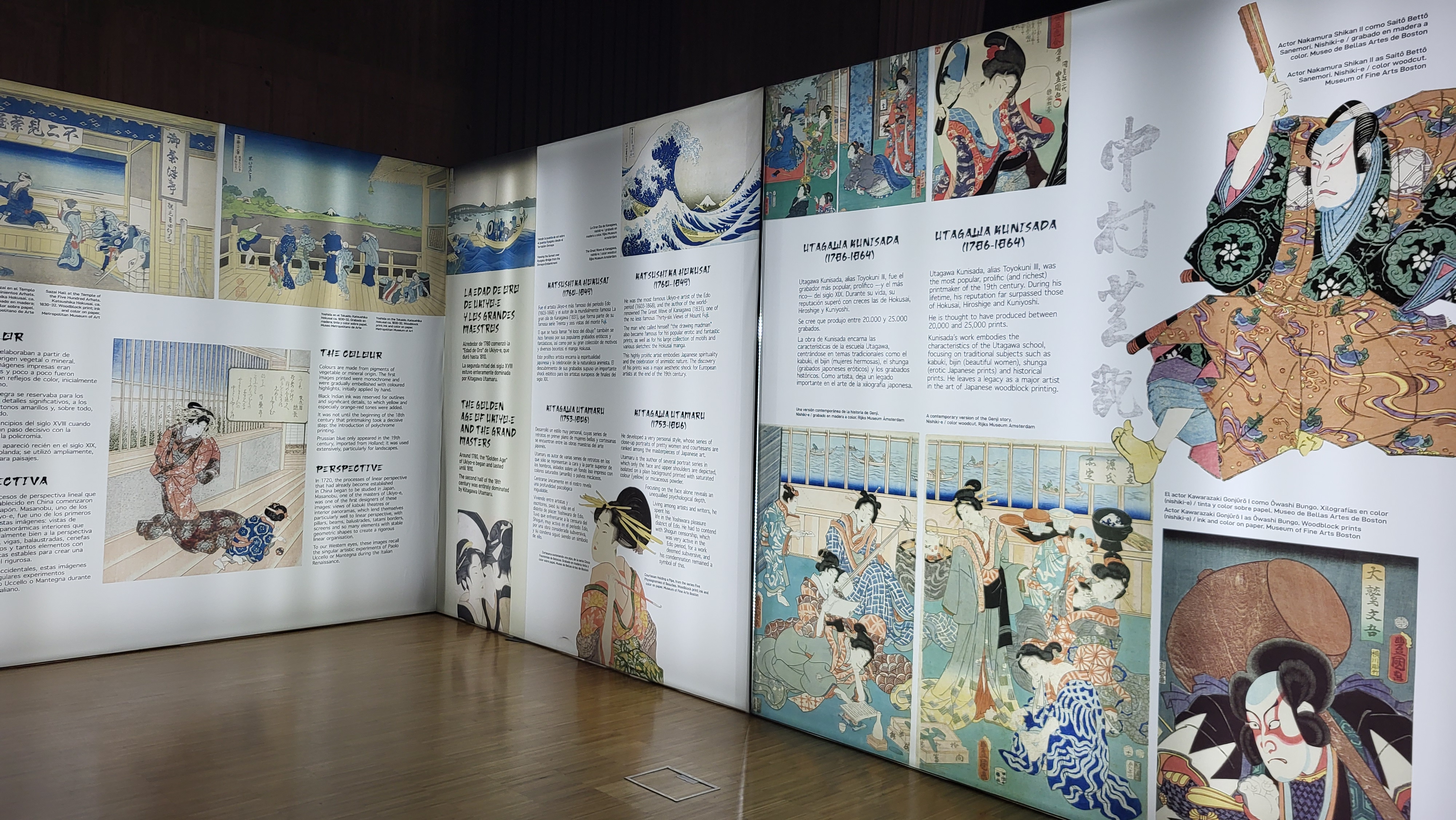 Panel explaining the basic features of Ukiyo-e as well as renowned artists.
Panel explaining the basic features of Ukiyo-e as well as renowned artists.
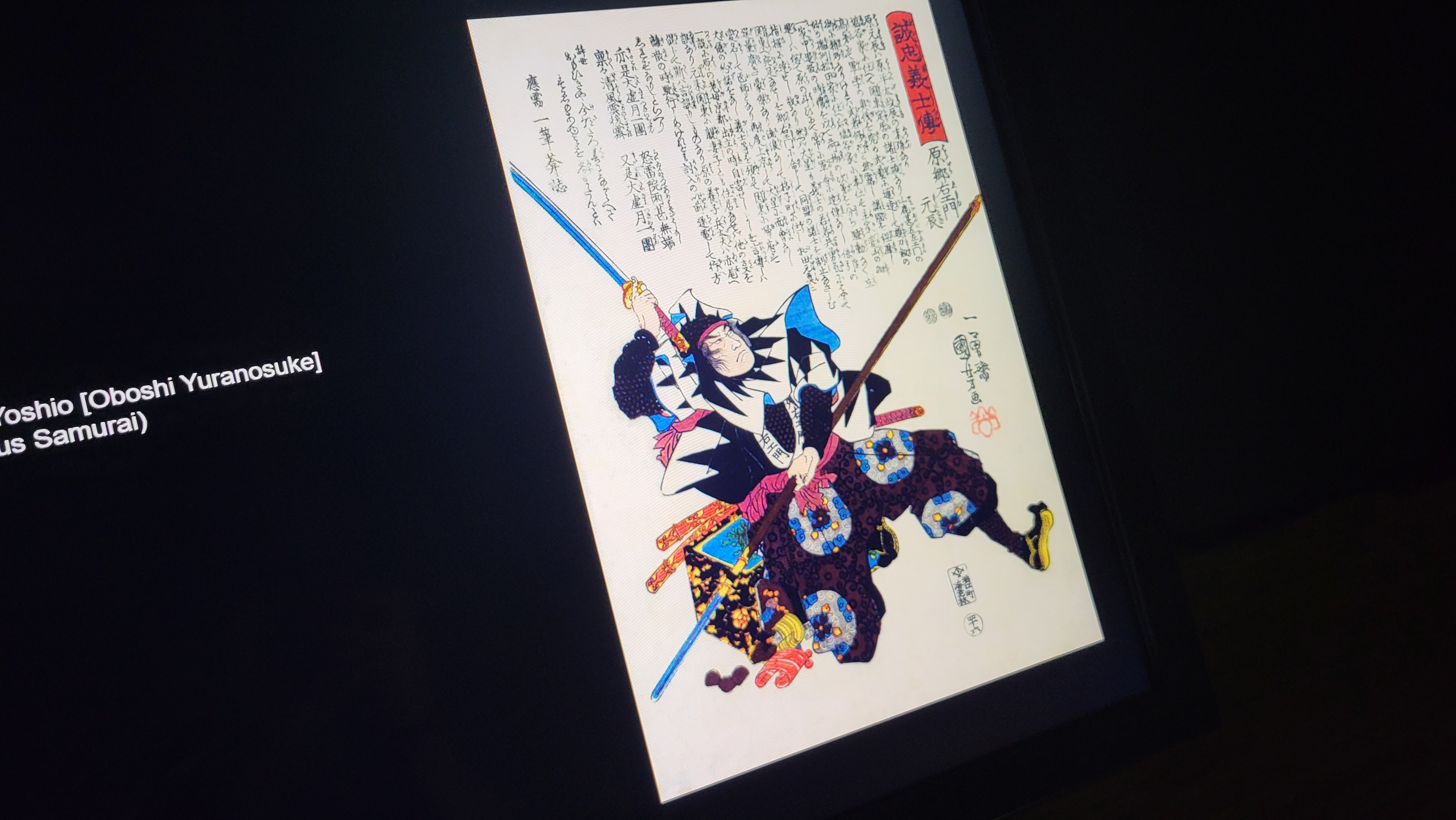 “The 47 Ronin or Loyal Retainers, No. 1: Oishi Kuranosuke Yoshio", by Utagawa Kuniyoshi.
“The 47 Ronin or Loyal Retainers, No. 1: Oishi Kuranosuke Yoshio", by Utagawa Kuniyoshi.
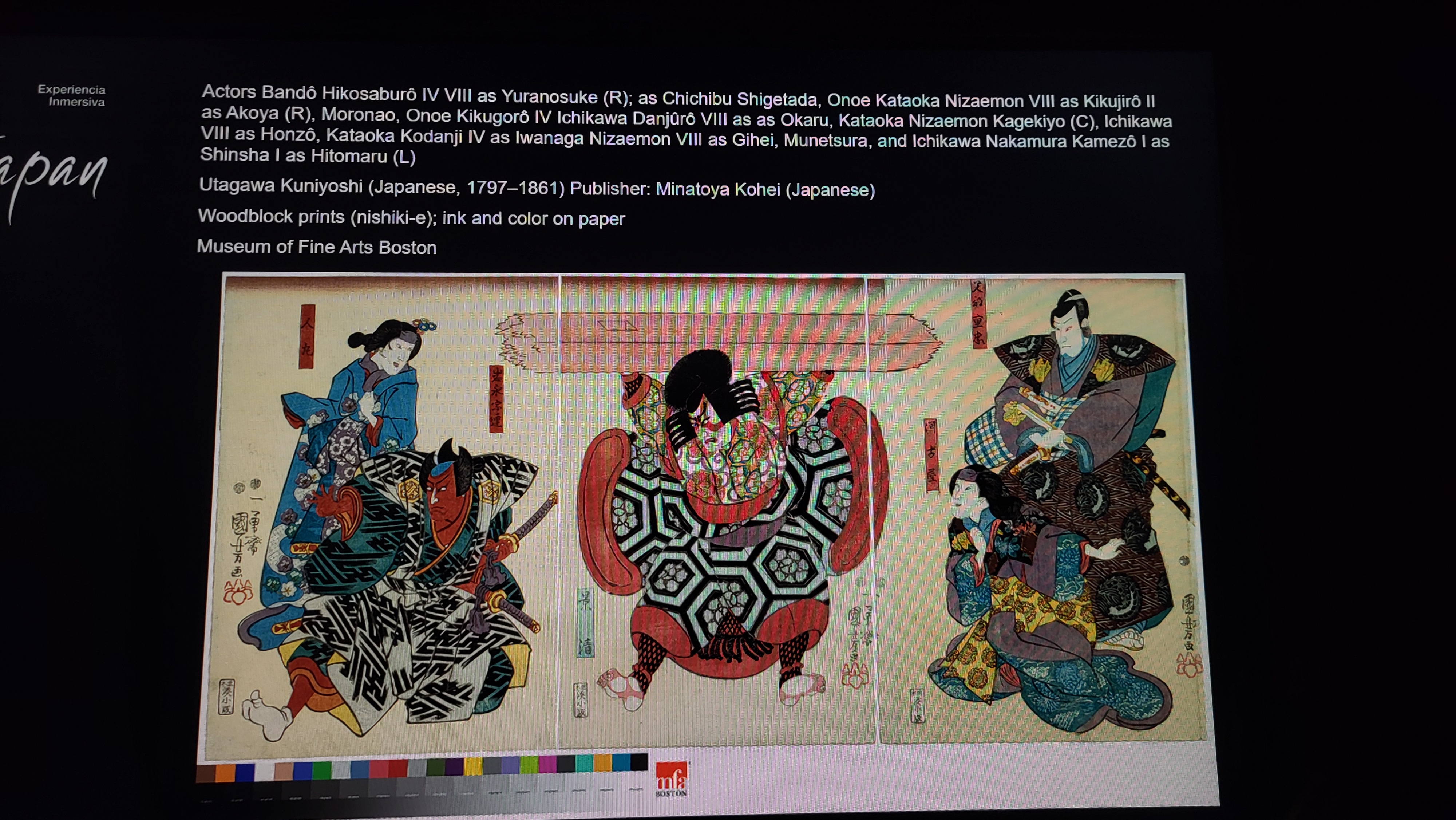 Several kabuki actors, by Utagawa Kuniyoshi.
Several kabuki actors, by Utagawa Kuniyoshi.
The second part was the main immersive experience: a 5-walls projection (all sides of a prism except for the ceiling) that showed an intricate composition of pieces ranging from folk tales, to views of Mount Fuji, to kabuki actors, to popular figures and other illustrations; I really enjoyed the bamboo forest with mythical creatures spawning in and camouflaging and the royal retainers and waves depicted in several prints.
Finally, the last section consisted of a VR experience of some paintings and a set of blank canvasses to attempt drawing some ukiyo-e pieces based on displayed references.
Some of my favourite Ukiyo-e pieces
I spent most of my time studying the pieces from the collection “The 47 Ronin or Loyal Retainers”, delighted by the expressive positions each of the prints displayed. I really like reading about Japanese swordsmen, bushi, and warriors, so I quite enjoyed those. I took pictures of them to remember both the names and which I liked the most! Some of my favourite ones below:
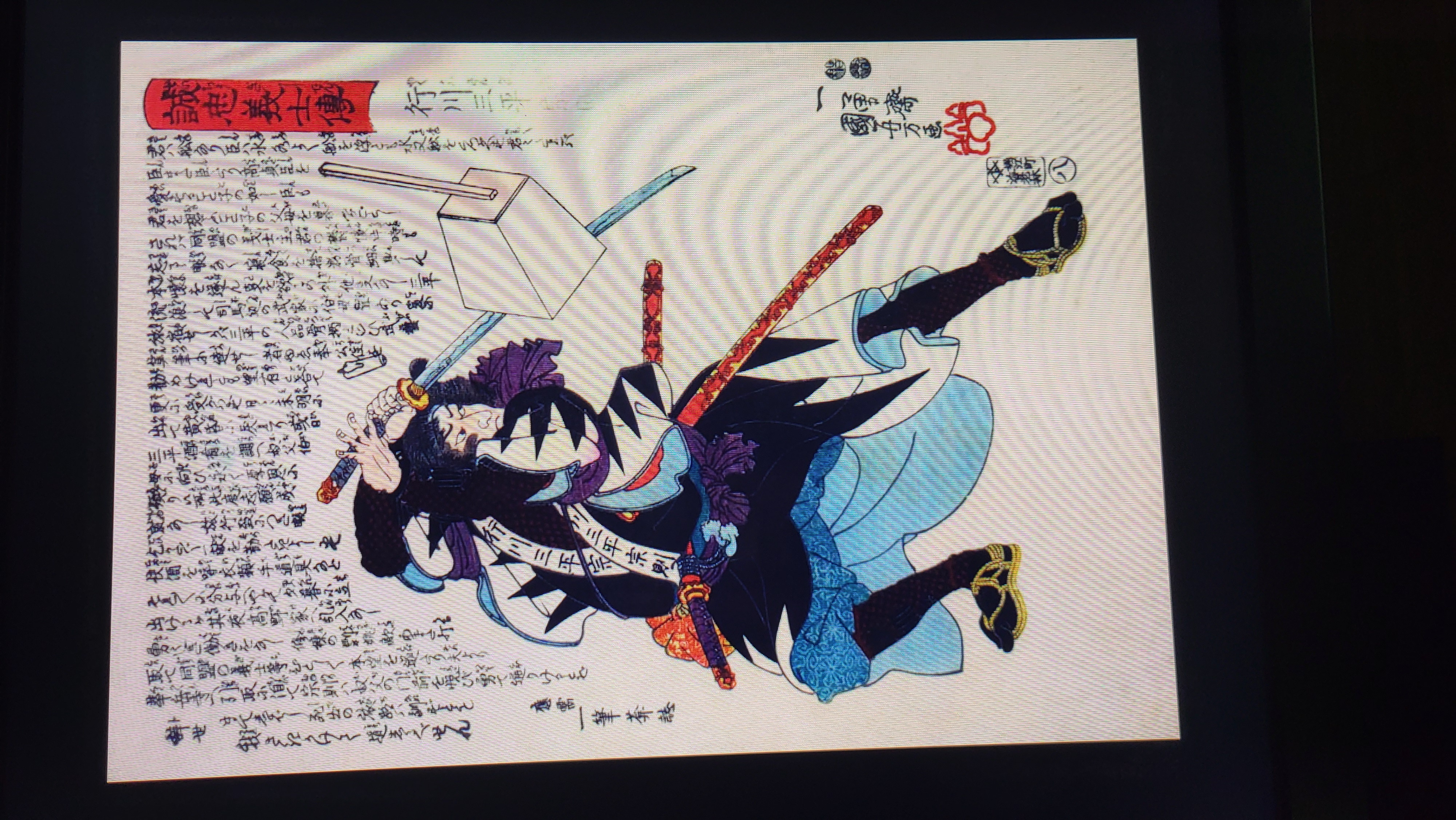 I really like this piece, “Munenori - 47 Ronin” by Utagawa Kuniyoshi, because it reminds me of how we may block attacks during shiai geiko 試合稽古 in my kendo classes.
I really like this piece, “Munenori - 47 Ronin” by Utagawa Kuniyoshi, because it reminds me of how we may block attacks during shiai geiko 試合稽古 in my kendo classes.
 This one just seems so cool to me! He is “Zhu Gui” (朱贵), also known as “The Dry-land Crocodile”, from the Chinese tale “Water Margin” (水滸傳, or “Outlaws of the Marsh”). Print by Utagawa Kuniyoshi. Click image for more info.
This one just seems so cool to me! He is “Zhu Gui” (朱贵), also known as “The Dry-land Crocodile”, from the Chinese tale “Water Margin” (水滸傳, or “Outlaws of the Marsh”). Print by Utagawa Kuniyoshi. Click image for more info.
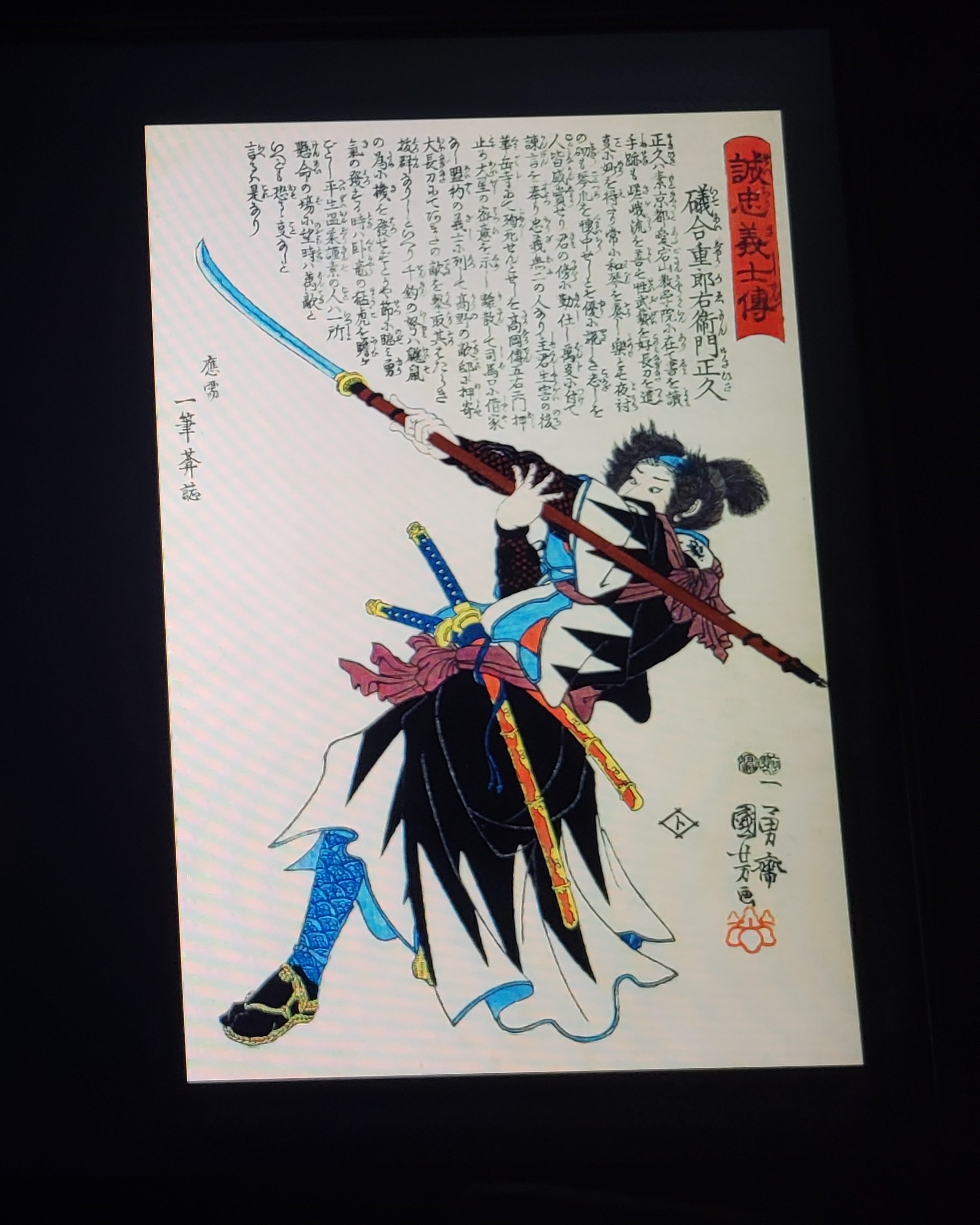 “Seichu Gishi Den - 10 Ronin” by Utagawa Kuniyoshi. Notice the two swords at the waist of the samurai: a katana (the long one) and a wakizashi (the shorter one). At kendo class I have only used a katana so far, but it would be interesting to try using a wakizashi. Also, isn’t it cool how they are held in place with a big obi? By the way, his main, long weapon in the print is a naginata (なぎなた).
“Seichu Gishi Den - 10 Ronin” by Utagawa Kuniyoshi. Notice the two swords at the waist of the samurai: a katana (the long one) and a wakizashi (the shorter one). At kendo class I have only used a katana so far, but it would be interesting to try using a wakizashi. Also, isn’t it cool how they are held in place with a big obi? By the way, his main, long weapon in the print is a naginata (なぎなた).
Also, I found this piece of cats enjoying a cool evening to be so amusing and cute!
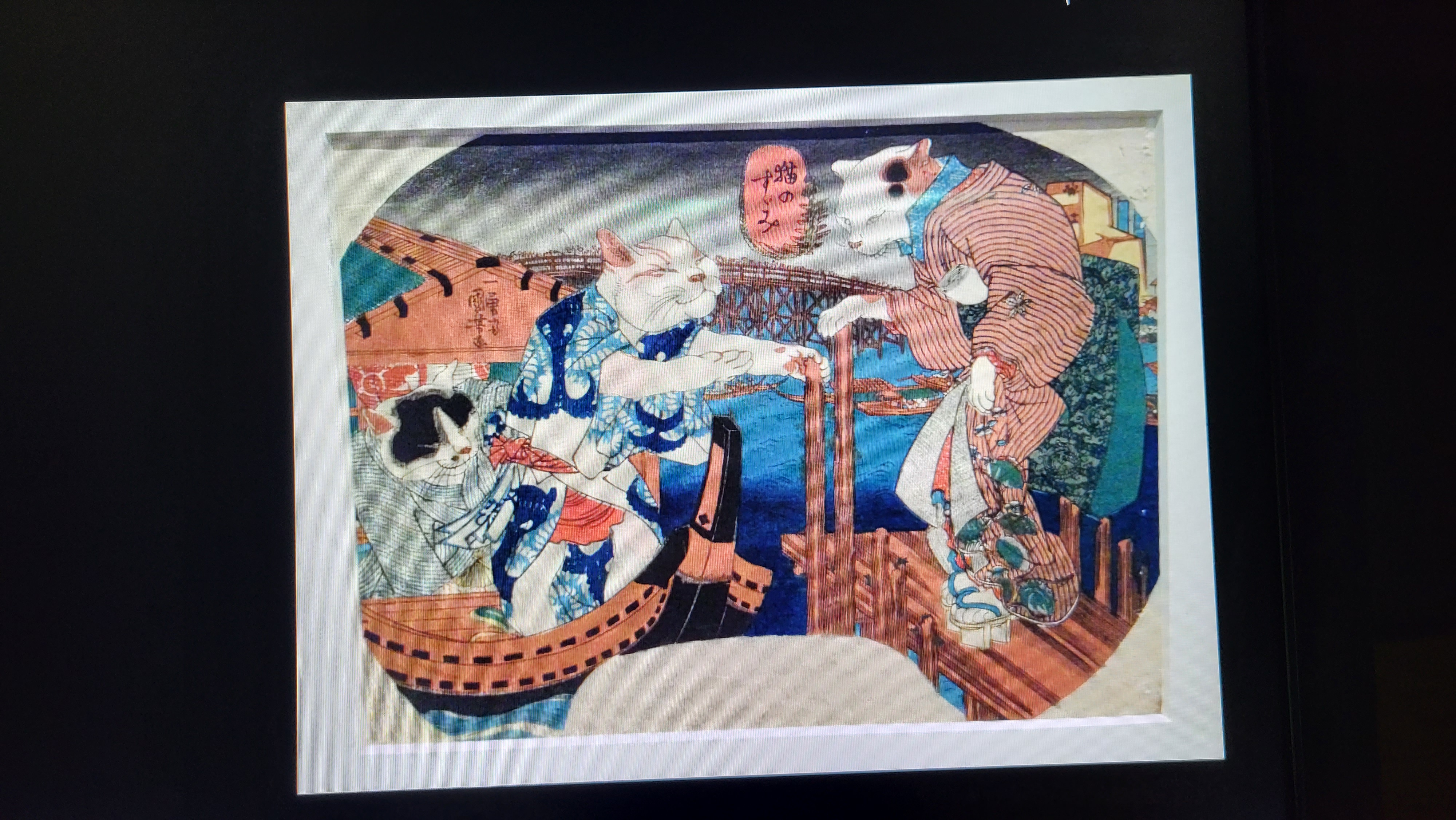 omg cats! ヾ(•ω•`)o. “Cats Enjoying the Evening Cool" by Utagawa Kuniyoshi
omg cats! ヾ(•ω•`)o. “Cats Enjoying the Evening Cool" by Utagawa Kuniyoshi
Finally, this particular piece felt so peaceful to me:
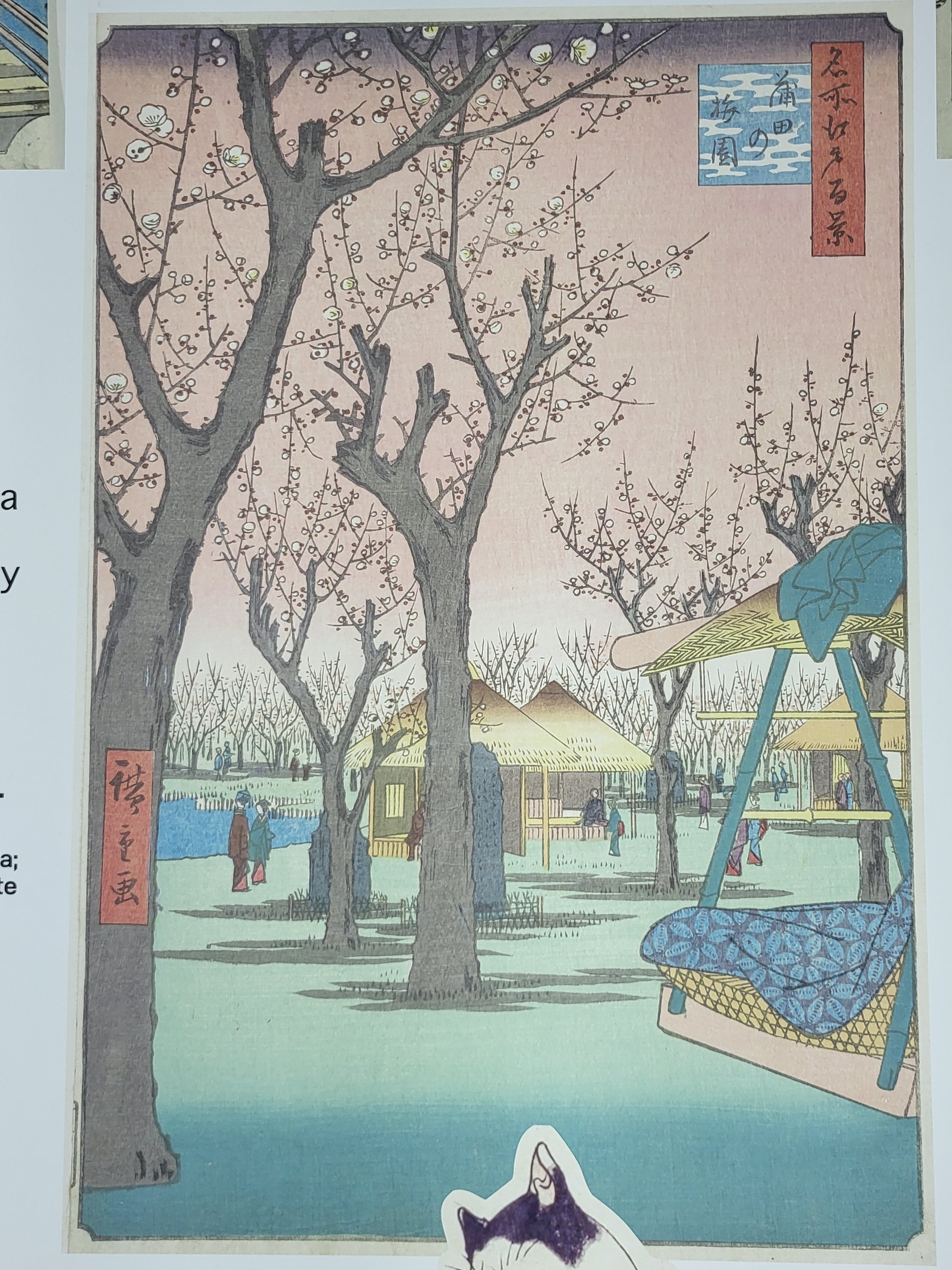 A plum forest. “Kamata no Baien” by Utagawa Hiroshige.
A plum forest. “Kamata no Baien” by Utagawa Hiroshige.
Final thoughts
Had you ever heard about Ukiyo-e? Maybe you had seen some pieces, but had never heard of the genre’s name. In any way, I hope that I got you interested in this artstyle! Also, consider checking some of the references and resources I put at the end.
I really liked the exhibition, and I believe that in other cities with bigger facilities it is even more immersive, so I would recommend visiting it. While I really was hoping to at least see one real piece displayed, there were none available at my city; nonetheless, this just makes me more determined: I have added “seeing a ukiyo-e piece in person” as another item to my bucket list of things to do once I return to Japan again!
(By the way, I will write about one of my hobbies, a bit related to Ukiyo-e, in a different post).
Regards,
Saul FG
if you would like to know more about Ukiyo-e prints or browse some pieces, check this website out: ukiyo-e.org ! ( •̀ ω •́ )✧ ↩︎
Would you like to learn more about woodblock printing? Then check this one out: education.asianart.org ↩︎
